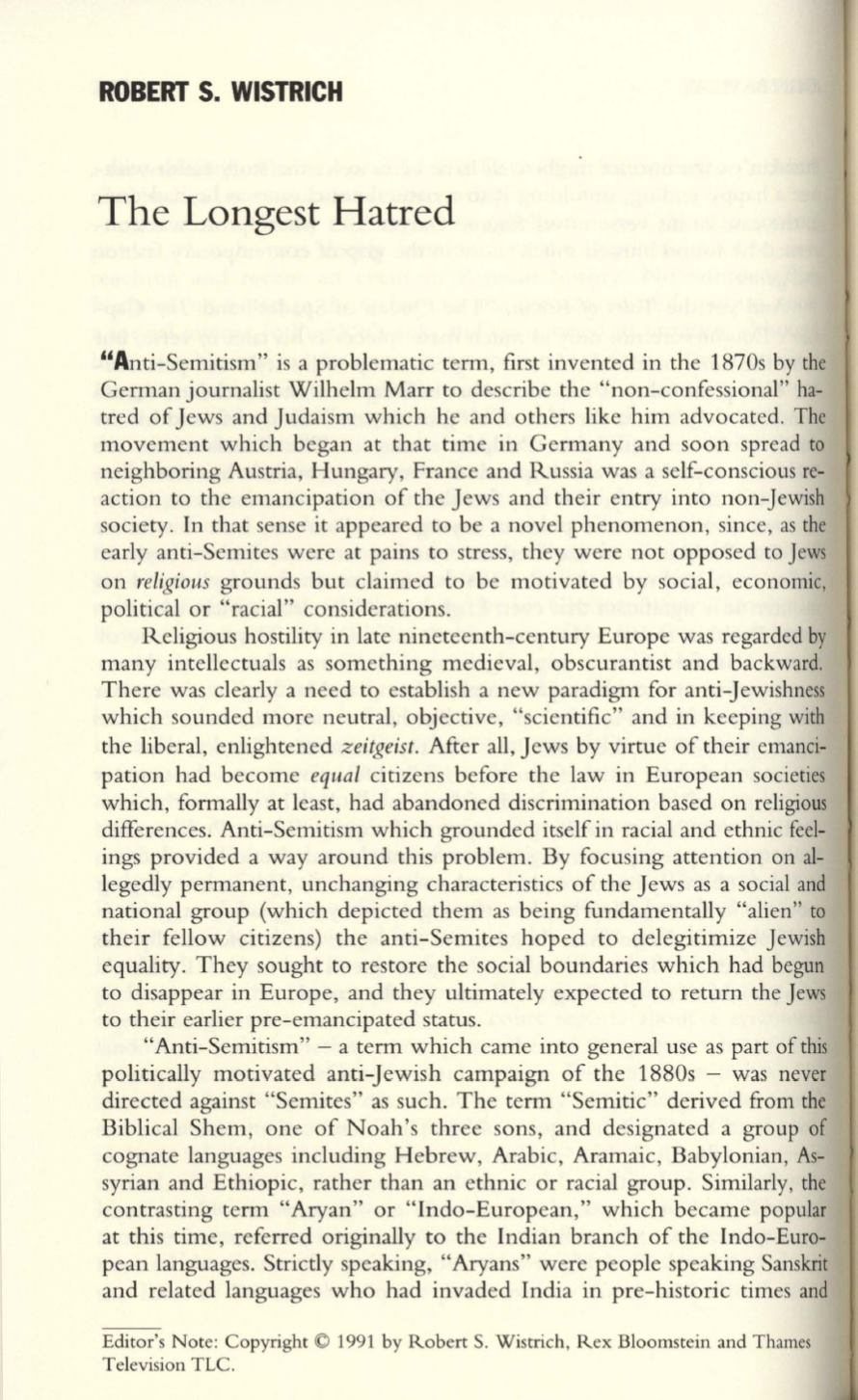
ROBERT S. WISTRICH
The Longest Hatred
"Anti-Semitism" is a problematic term, first invented in the 1870s by the
German journalist Wilhelm Marr to describe the "non-confessional" ha–
tred of Jews and Judaism which he and others like him advocated. The
movement which began at that time in Germany and soon spread to
neighboring Austria, Hungary, France and Russia was a self- conscious re–
action to the emancipation of the Jews and their entry into non-Jewish
society. In that sense it appeared to be a novel phenomenon, since, as the
early anti-Semites were at pains to stress, they were not opposed
to
Jews
on
religious
grounds but claimed to be motivated by social, economic,
political or "racial" considerations.
Religious hostility in late nineteenth-century Europe was regarded
by
many intellectuals as something medieval, obscurantist and backward.
There was clearly a need to establish a new paradigm for anti-Jewishness
which sounded more neutral, objective, "scientific" and in keeping with
the liberal, enlightened
zeitgeist.
After all, Jews by virtue of their emanci–
pation had become
equal
citizens before the law in European societies
which, formally at least, had abandoned discrimination based on religious
differences. Anti-Semitism which grounded itself in racial and ethnic feel–
ings provided a way around this problem. By focusing attention on
al–
legedly permanent, unchanging characteristics of the Jews as a social and
national group (which depicted them as being fundamentally "alien" to
their fellow citizens) the anti-Semites hoped to delegitimize Jewish
equality. They sought to restore the social boundaries which had begun
to disappear in Europe, and they ultimately expected to return the Jews
to their earlier pre-emancipated status.
"Anti-Semitism" - a term which came into general use as part of this
politically motivated anti-Jewish campaign of the 1880s - was never
directed against "Semites" as such. The term "Semitic" derived from the
Biblical Shem, one of Noah's three sons, and designated a group of
cognate languages including Hebrew, Arabic, Aramaic, Babylonian, As–
syrian and Ethiopic, rather than an ethnic or racial group. Similarly, the
contrasting term "Aryan" or "Indo-European," which became popular
at this time, referred originally to the Indian branch of the Indo-Euro–
pean languages. Strictly speaking, "Aryans" were people speaking Sanskrit
and related languages who had invaded India in pre-historic times and
Editor's Note: Copyright
©
1991 by Robert S. Wistrich , Rex Bloomstein and Thames
Television TLC.


